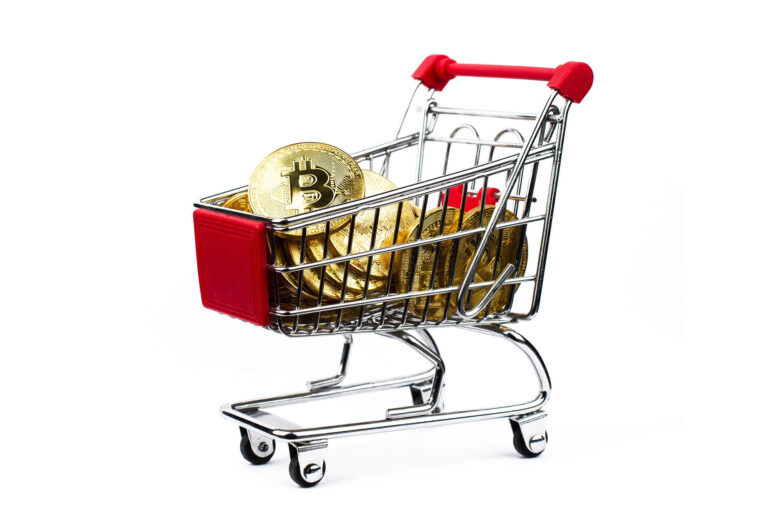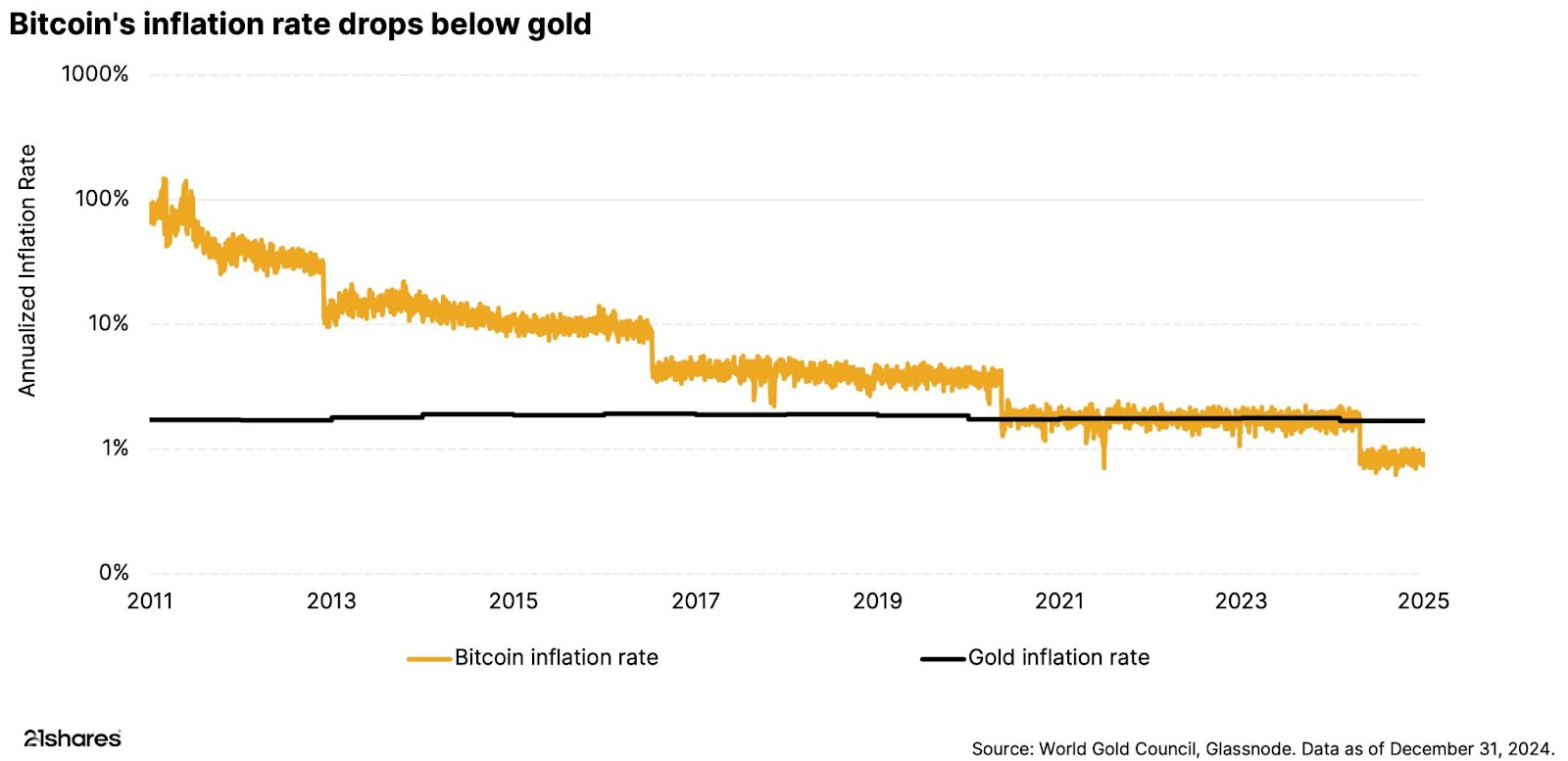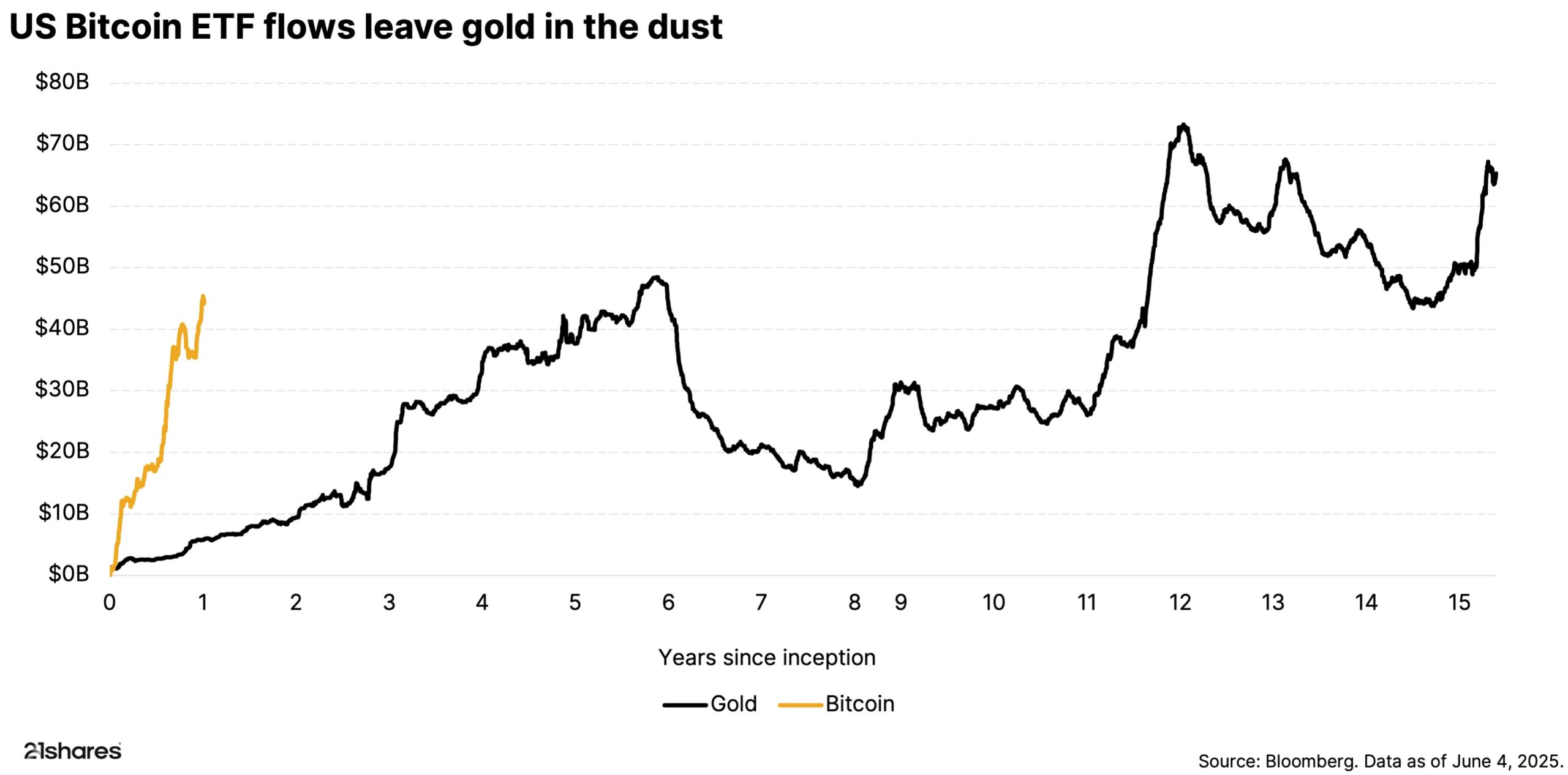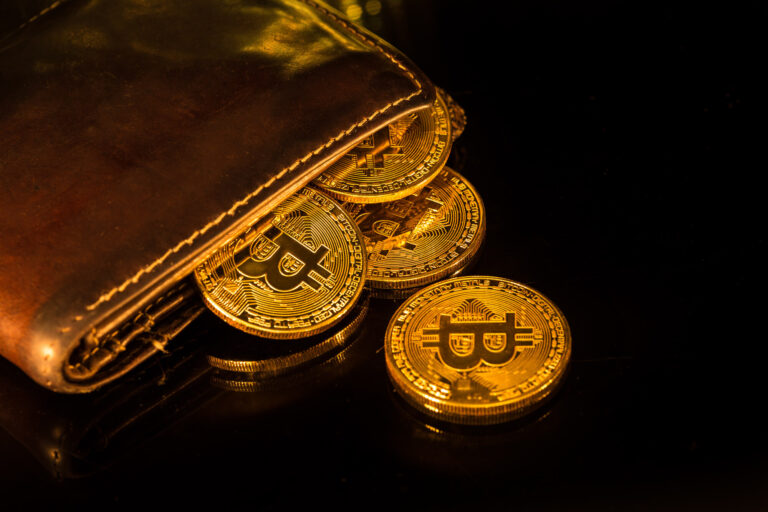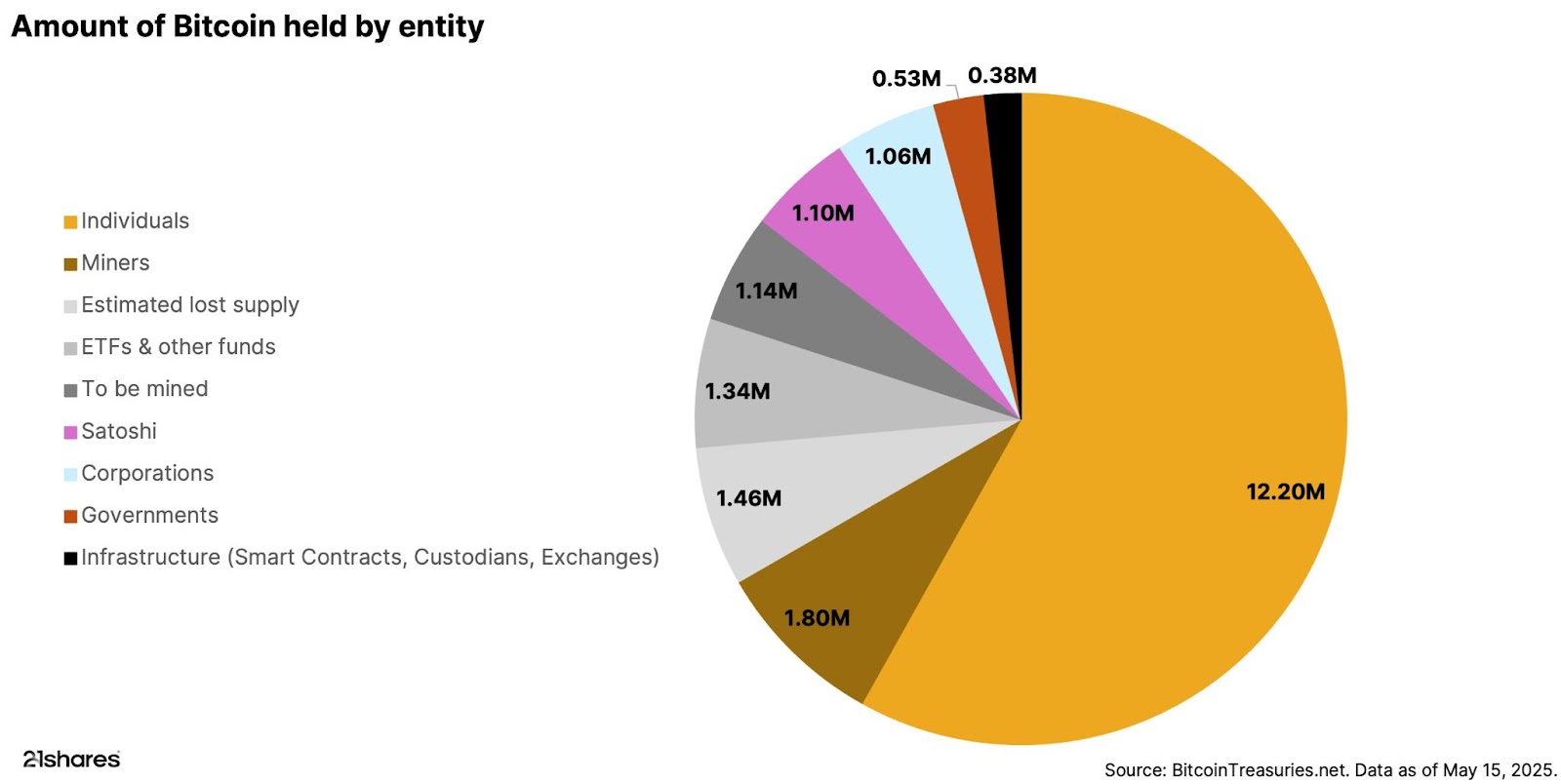Bitcoin has been trading above $100'000 for two months now, driven by clearer regulations and increasing interest from both large institutions and everyday investors. What started quietly in 2009 as a digital experiment has grown into a globally recognized financial asset.
It’s important to understand why there continues to be so much interest in Bitcoin, and why investors are still happy to buy near all-time highs.
Bitcoin as digital gold
Bitcoin is often referred to as “digital gold.” Like gold, it’s seen as a safe place to store value, especially during uncertain times. And like gold, Bitcoin isn’t controlled by any government, bank, or company. But Bitcoin takes it a step further.
Bitcoin has a finite supply, and only 21 million will ever exist. Over 95% has already been mined, and the rest will be released gradually over the next century. That built-in scarcity makes Bitcoin resistant to inflation because no one can create more of it on demand. While gold's supply is also scarce, it is not finite, with future supply varying depending on mining activity and new discoveries. In recent years, Bitcoin’s inflation rate has fallen below gold’s. This is considered a significant development, potentially shifting Bitcoin's role from a volatile investment towards a more stable store of value.
Additionally, Bitcoin can be divided, easily carried, and exchanged in small units, making it a modern form of gold for the digital age.
Bitcoin ETFs are better than gold ETFs
Over the past year, US Bitcoin exchange-traded funds (ETFs) have attracted over 42 billion USD and now manage more than 130 billion USD in assets. This makes the most successful ETF launches ever in terms of asset under management (AUM), and shows that big investors are taking Bitcoin seriously. To put it in perspective, Bitcoin ETFs are already almost half as big as all gold ETFs worldwide, even though gold has been around for decades.
At the same time, Bitcoin’s price has been rising while its ups and downs (volatility) have been getting smaller. This means Bitcoin is becoming more stable and mature as an investment.
What does this mean for you? As Bitcoin becomes more widely used and accepted, the biggest risk might not be price swings, but missing out. Bitcoin isn’t just a niche asset anymore; it’s becoming an important part of many investment portfolios.
Accelerating and broadening adoption
Governments, companies, and institutions are embracing Bitcoin as a reliable asset in an uncertain world. In the US, several states are advancing Bitcoin Reserve Bills, aiming to integrate Bitcoin into long-term fiscal policy. With bond markets weakening and debt burdens mounting, it is entering national playbooks. Corporations are moving even faster, acquiring Bitcoin at nearly three times the rate it’s being mined.
The impact is clearly visible in on-chain data. Nearly half of all Bitcoin hasn’t moved in over three years, and exchange balances are at their lowest since 2018. This is leading to a slow but steady supply crunch, which means there’s less Bitcoin available, but more people want it. For investors, that could mean opportunity. As more people understand how limited Bitcoin truly is, its price may rise to match the growing demand.

